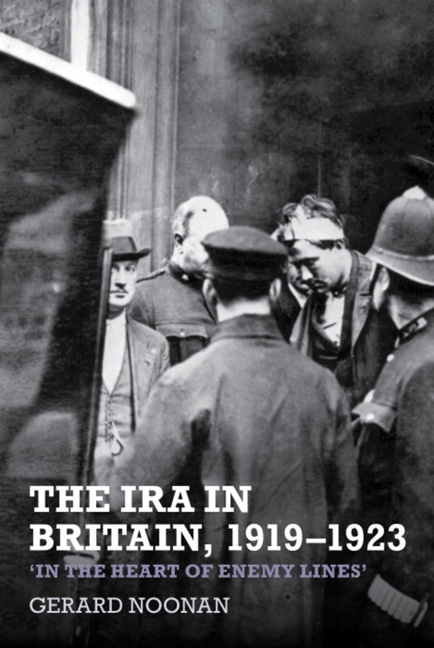Book contents
- Frontmatter
- Contents
- List of Illustrations
- List of Tables
- List of Graphs
- List of Abbreviations
- Acknowledgements
- Introduction
- Prologue
- 1 ‘On a Solid Footing’: Organizing Republicanism in Britain, January 1919–July 1921
- 2 Supplying an Army: Gunrunning in Britain, January 1919–July 1921
- 3 ‘We are doing what you are doing in Ireland’: IRA Operations in Britain, January 1919–July 1921
- 4 Truce, Treaty and Dissension, July 1921–June 1922
- 5 The Civil War, June 1922–May 1923
- 6 Combating the ‘Sinn Fein Movement’ in Britain: The Response of the Authorities, 1919–1923
- Epilogue and Conclusion
- Select Bibliography
- Index
2 - Supplying an Army: Gunrunning in Britain, January 1919–July 1921
- Frontmatter
- Contents
- List of Illustrations
- List of Tables
- List of Graphs
- List of Abbreviations
- Acknowledgements
- Introduction
- Prologue
- 1 ‘On a Solid Footing’: Organizing Republicanism in Britain, January 1919–July 1921
- 2 Supplying an Army: Gunrunning in Britain, January 1919–July 1921
- 3 ‘We are doing what you are doing in Ireland’: IRA Operations in Britain, January 1919–July 1921
- 4 Truce, Treaty and Dissension, July 1921–June 1922
- 5 The Civil War, June 1922–May 1923
- 6 Combating the ‘Sinn Fein Movement’ in Britain: The Response of the Authorities, 1919–1923
- Epilogue and Conclusion
- Select Bibliography
- Index
Summary
I
The retrospective political success of the Easter Rising encouraged those who re-formed the Volunteers and the IRB in 1917 to continue the struggle to overthrow British rule in Ireland. The acquisition of weapons, therefore, became of paramount importance. The attack at Soloheadbeg, the opening shots of the war, was motivated by a desire to acquire explosives. However, with only a limited amount of munitions available for purchase or theft in Ireland itself, rebels were forced to source materiel abroad. Britain was the main source of armaments procured overseas, and gunrunners there engaged in illegal and dangerous activities in order to provide munitions to their comrades in Ireland. As the Liverpool gunrunner Paddy Daly expressed it: ‘I always have it before me that we have got to help supply an army …’. This chapter discusses such gunrunning. Section II introduces the main figures involved. Section III follows gunrunners on missions to secure armaments. Section IV deals with the sources tapped, along with the types and quantities of materiel acquired. Section V notes the arrangements made for the storage of such armaments, while section VI describes the transport of weapons to Ireland and their distribution there. Section VII concludes.
II
Scarcity of weapons was a persistent problem for the IRA in Ireland. In 1917, in order to raise funds to buy arms, Volunteers held concerts, dances and collections. However, the number of firearms purchased with these funds was small. The following year, during the Conscription Crisis, many Volunteers began to acquire weapons by raiding private houses, despite Sinn Féin prohibiting such operations. In 1918, 311 civilians had their houses raided. In 1919, the figure was 196; in addition, the police suffered 12 raids and the military 15. In September 1920, IRA GHQ finally authorized the raiding of houses; 2,802 such operations took place that year. However, despite these and other attempts to acquire weapons, the IRA was forced to exploit sources abroad in order to augment its arsenal.
In this, the Volunteers were following in the footsteps of the IRB. In the run-up to the 1867 rebellion, Fenians procured munitions in London, Birmingham and Liverpool, and smuggled them to Ireland. Also, on 11 February that year, they unsuccessfully attempted to steal materiel from Chester Castle.
- Type
- Chapter
- Information
- The IRA in Britain, 1919–1923‘In the Heart of Enemy Lines’, pp. 84 - 134Publisher: Liverpool University PressPrint publication year: 2014

